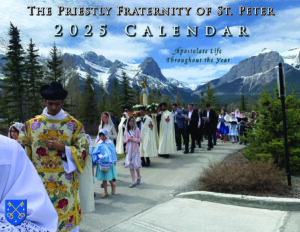The Liturgical Sources of Carroll’s Prayer for the USA
Given Fr. Stinson’s initiative of prayer for October, it is a perfect time for a more in-depth examination of Archbishop Carroll’s “Prayer for the Church and the Civil Authorities“.

This prayer has been a part of American Catholicism almost since the Republic’s founding–indeed, it could rightly be said that it is the American Catholic devotion par excellence, given its long history and its prominent presence in myriad devotional manuals and Missals, notably including the Baltimore Manual of Prayer (1888), the New Roman Missal of Fr. Lasance (1945).
Structurally, Carroll’s prayer consists of a series of orations imploring God’s assistance on behalf of:
* the catholicity and preservation of the Church
* the ecclesial hierarchy
* the Federal government
* the state government and judiciary
* the citizens of the United States
* the faithful departed
Conceptually these seem to draw from the Intercessions in the Good Friday Mass of the Presanctified, which has a similar progression of prayers for the Church, the Pope, the clergy, the Faithful, and for rulers, etc. In fact, the opening of Carroll’s prayer is a direct translation from the first collect of the Good Friday liturgy:
We pray Thee, O Almighty and Eternal God, who through Jesus Christ hast revealed Thy glory to all nations, to preserve the works of Thy mercy; that Thy Church, being spread through the whole world, may continue, with unchanging faith, in the confession of Thy name.
Omnipotens sempiterne Deus, qui gloriam tuam omnibus in Christo gentibus revelasti: custodi opera misericoriæ tuæ; ut Ecclesia tua, toto orbe diffusa, stabili fide in confessione tui nominis perseverat.
Following this are similarly-constructed but apparently new prayers, specifically tailored to the government established by the 1787 Constitution. The offices of President and Congress, Governors, and the judiciary are directly referenced. Carroll may have composed these petitions himself, perhaps influenced by a vaguely similar prayer published in 1789 by the Abbe Claude de la Poterie and recited each Sunday at the Church of the Holy Cross in Boston.
The final paragraph, however, is again directly liturgical. Much of its language is taken verbatim from the Commemoration of the Dead in the Roman Canon (Memento etiam):
“Finally, we pray Thee, O Lord of mercy, to remember (Memento) the souls of Thy servants (famulorum famularumque) departed who are gone before us with the sign of faith, and repose in the sleep of peace (qui nos praecesserunt cum signo fidei, et dormiunt in somno pacis).”
Carroll’s prayer then names various categories of the departed: parents, relations, and friends, etc. that are not specifically mentioned in the Mass. It concludes, however, with an almost exact quote from the Canon, the only difference being Carroll’s insertion of the word “everlasting.”
“To these, O Lord, and to all that rest in Christ, grant, we beseech Thee, a place of refreshment, light, and everlasting peace.”
Ipsis, Domine, et omnibus in Christo quiescentibus, locum refrigerii, lucis et pacis, ut indulgeas, deprecamur.
Overall, while this composition shows much that has been newly tailored to the new government and the new situation of the Catholics in the United States, it also kept one foot firmly in tradition by modeling itself on immemorial liturgical prayer and by directly translating passages from the Roman Canon and the Solemn Intercessions of Good Friday.
And as this important part of the American Catholic patrimony has seen action in some of the nation’s most critical hours, including the Civil War, it seems only right to keep it close at hand in our own.
October 5, 2020








